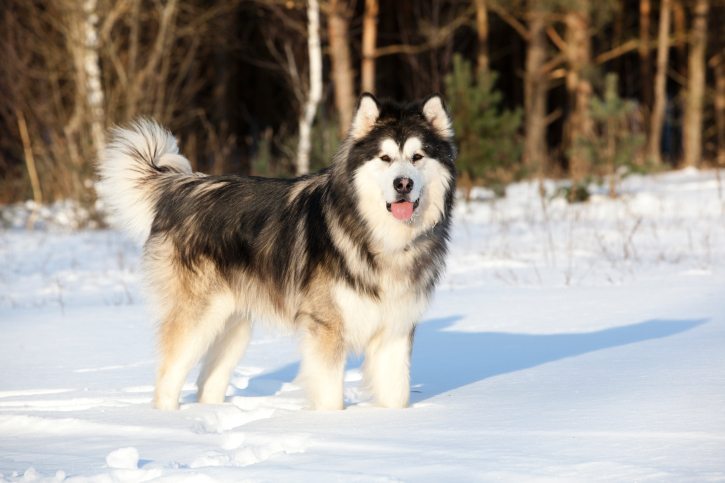History About The Alaskan Malamute
The Alaskan Malamute is one of the oldest breed of dog and is genetically distinct from other dog breeds. This breed is known for aiding Rear Admiral Richard Byrd reach the South Pole. The Alaskan Malamute was also critical 

Alaskan Malamutes were named after the Mahlemuts, an Inuit tribe in northern Alaska. It is not certain exactly where these dogs originated, but they are most likely descended from the wolf. The 1920s found in increased interest in this breed when sled racing became popular. Formal breeding began in 1926 and the AKC first registered the breed in 1935.
Breed Description
The Alaskan Malamute is the largest of the Arctic dogs. This breed is a thick, well-built dog with a plumed tail that is held over the back. Their eyes are medium sized and are dark brown and almond shaped. The Malamute’s face is wolf-like, but with a kind and curious expression. Their feet are large with a snowshoe type of tough pads. They have a thick, coarse double coat that is one to three inches in length. The coat comes in a range of light gray to black, sable and shading of sable to red. Other combinations include wolf gray, black and white, and red with an undercoat of dark gray. The only solid color allowed is white.
An Alaskan Malamute can live 12 to 15 years. They are usually 23 – 25 inches high and weigh between 75 and 95 pounds. Litter size can range from four to ten puppies.Exercise And Training
Exercise And Training
Malamutes fare best with cold-climate dwellers, outdoorsy types and experienced dog handlers. Although intelligent and friendly, this breed needs a consistent positive reinforcement and may be challenging to train. They are pack animals and do best with a confident and loving guardian. They love the outdoors and can run for miles. They require daily stimulation and exercise. When left alone or do not have enough exercise, they can become destructive out of boredom. Malamutes are great with children who are old enough to play with the safely. They do well with a large yard where they can run and dig to their hearts content. Because of their loving nature, they are not good watch dogs, but their looks can be intimidating to strangers.
This loyal and attentive dog can be a great life-long companion but may require a consistent obedience training routine and given plenty of love and exercise.
Photo: Thinkstock
